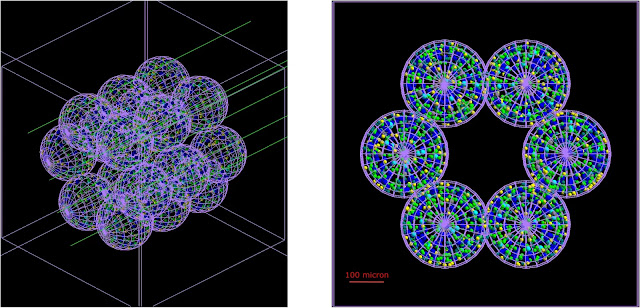Mechanistic model of radiotherapy-induced lung fibrosis using coupled BioDynaMo and Monte Carlo simulations
We are proud to announce the newly published manuscript "Mechanistic model of radiotherapy-induced lung fibrosis using coupled 3D agent-based and Monte Carlo simulations" by Nicolò Cogno, Roman Bauer, and Marco Durante, appearing on Communications Medicine volume 4, Article number: 16 (2024).
Fig. 1: Alveolar segment model in TOPAS-nBio.In this work, the authors develop and characterize a coupled 3D agent-based – Monte Carlo model that mechanistically simulates the onset of the radiation-induced lung fibrosis in an alveolar segment, laying thus the groundwork for further investigating the effects of different radiotherapeutic treatments on the onset of radiation-induced lung fibrosis via mechanistic modelling.
The featured 3D agent based models are (of course) developed using the open-source platform BioDynaMo, and the implementation details have been shared in previous work by the same trio here, and here.
Without further ado, if you are interested in studying the damage that can derive to healthy tissues during radiotherapy, thus advancing the research on personalized dose delivery and fractionation, read this excellent Open Access manuscript here and reach out to the authors!
Just a reminder that CERN (European Organization for Nuclear Research), a BioDynaMo consortium member, has currently a vacancy to work on Digital Twins and BioDynaMo: apply and join us!!



Comments
Post a Comment